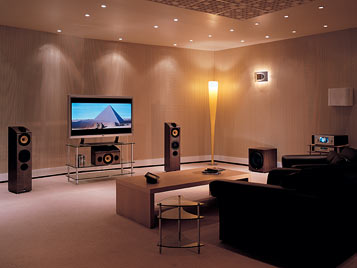Assuming you’ve opted to buy speakers from the same manufacturer for every channel in your home theater system, a fundamental requirement for great sound, the next important thing is to position the speakers correctly in your room. The ITU (International Telecommunications Union) standard for multichannel recording and playback is one recommended standard for speaker placement, often employed by studio engineers when mixing surround audio for both movie and music use, and as a broad guideline, it’s effective. However, the ITU stipulations can be impractical for many homes. For example, it demands identical speakers be used in each channel, including the centre channel, which is difficult to do if your system has floor standing speakers for left and right front channels.

Broader guidelines, then, are as follows: First, try to get the rear surround speakers high up on the walls, tilted down towards your listening position (this is true of two, three or four rear speaker systems). If you don’t want to wall-mount your speakers, consider using tall stands instead. The key is to avoid placing your rear speakers too close to your ears: height helps introduce an additional and natural acoustic ‘delay’ to the sound. The only exception to this rule is a dedicated dipole/bipole surround speaker, such as our DS7, which fires sound in multiple directions at once. Designs such as this can be placed alongside or behind the listening position, but shouldn’t be tilted downwards.
Secondly, place your centre speaker at the same height as the main left and right speakers, under the screen if possible. Try to align its tweeter with those on the other front speakers in your system, or if that’s not possible, use a laser pointer and align its angle of tilt so that it focuses on to the same position on your seat as your other speakers. This can be extremely effective, and is easily achieved with a simple tilting centre-speaker stand such as the one we make.
Further centre-speaker tweaking will help focus your system’s sound field. If you imagine a shallow, curved arc that runs through the plane of your main left and right speakers, the centre speaker needs to be placed at its apex, so that it sits right at the heart of the stereo image generated by your main speakers, and slightly behind them. It should also be placed equidistant between the two, or as close as it is practicably possible to be.












